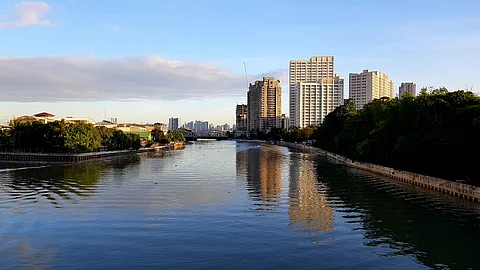
- NEWS
- the EDIT
- COMMENTARY
- BUSINESS
- LIFE
- SHOW
- ACTION
- GLOBAL GOALS
- SNAPS
- DYARYO TIRADA
- MORE

The petition recently submitted to the National Commission for Culture and the Arts (NCCA) and the National Historical Commission of the Philippines (NHCP), concerning making Pasig River a National Cultural Treasure and National Historical Landmark and the need to protect the body of water that connects Laguna de Bay and Manila Bay from the proposed Pasig River Expressway (PAREX), highlights not only the scale of challenge today to safeguard built and environmental heritage in Manila, but also underscores the task of accomplishing the United Nations Sustainable Development Goals.
As reports of the Arcadis Sustainable Cities Index dating from 2016, 2018, 2022 and 2024 lay bare, Metro Manila in recent years ranks 96, 95, 93 and 94 out of 100 global cities. Put simply, Metro Manila consistently rates as one of the world’s least successful metropolises with regard to the management of the natural environment, people, profit and progress.
With Metro Manila now housing at least 13.5 million people and according to the Atlas of Urban Expansion, with its density having increased by over 100 persons per hectare since 2000, the World Health Organization’s recommendation of nine square meters of open space per person is all but a dream. Such is the paucity of open space that the last great lung is the Pasig River.
Under the threat of the elevated expressway being built, what value does society give to Metro Manila’s principal waterway? Does it ecological health matter? Does its role, in enabling life from the pre-colonial to today, count? Does its picturesqueness have any value? Do the buildings and structures along its banks, especially those of noted cultural heritage significance, truly have value? Moreover, is open space, be it in the form of the natural environment or landscape architecture projects, a societal asset? Or should open space merely be understood as offering potential sites for urban construction and, so, be exploited?
The petition to the NCCA and NHCP ultimately asks such questions as to what the environment and culture of Metro Manila now is and what it will become in future years. The preservation of the Pasig River is, in real terms, a narrative of what culture puts value upon. In this regard, two fundamentals must be recognized.
First, in a world where change is constant, empirical data reveals that high performing cultures thrive on innovation; change enables people’s well-being to rise.
Second, in contrast, unhealthy cultures respond poorly when change in any form transpires. They not only foster lackluster performance, but they can be actually their own undoing. McKinsey and Company, a global management consulting firm, concludes that when change fails, 70 percent of those failures are due to culture-related issues.
Therefore, will change proposed by the construction of PAREX actually stimulate a healthier and higher-performing urban culture? If it won’t, then what is the true cost to society?
Note: Ian Morley teaches at the Chinese University of Hong Kong and is the vice president of the International Planning History Society.
